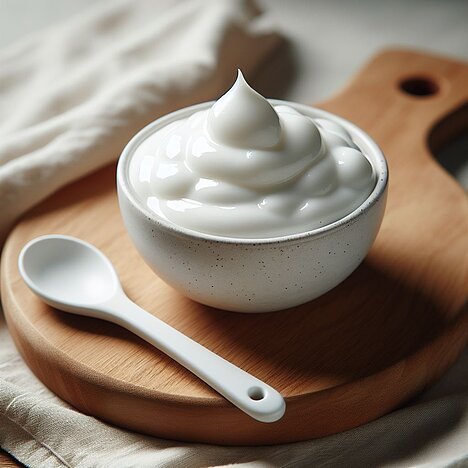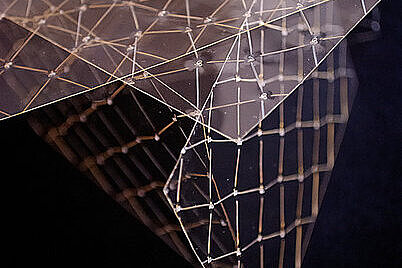Aquafaba

What is aquafaba?
Aquafaba is the cooking water from chickpeas and other pulses, which takes on a slightly thick consistency when boiled down. The name comes from Latin and means "bean water". Aquafaba was long regarded as a waste product until it was discovered that it can be whipped in a similar way to egg white and can therefore be used as a vegan egg alternative.
What can you use aquafaba for?
Aquafaba has a relatively neutral taste and is therefore suitable for many different recipes, both sweet and savory. You can use aquafaba as a substitute for egg whites to make vegan desserts such as chocolate mousse, meringue or macaroons. But you can also use aquafaba as a binding agent or emulsifier for savory dishes such as vegan mayonnaise, soups, sauces or hummus. You can even use aquafaba as a topping for cocktails such as whiskey sour.
How healthy is aquafaba?
Aquafaba is a healthy and animal-friendly alternative to eggs that offers many benefits. Firstly, aquafaba is low in calories and contains a lot of vegetable protein, which is good for a high-protein diet. Secondly, aquafaba is free from cholesterol and allergens that can be found in eggs. You are also helping to protect the environment with aquafaba, as you are not causing any of the animal suffering associated with egg production.
How do you make aquafaba yourself?
You can easily make aquafaba yourself by boiling chickpeas or other pulses and collecting the cooking water. You can also use the water from tins or jars, but make sure that it does not contain any additives such as salt or sugar. To make vegan egg whites from the bean water, you only need a few more ingredients:
- 150 ml chickpea water
- 1 tsp cream of tartar baking powder
- 1 teaspoon of locust bean gum
Pour the chickpea water into a tall bowl and add the cream of tartar baking powder and locust bean gum. Beat the mixture with a hand mixer for 2 to 5 minutes until it becomes stiff. Depending on the power of the appliance, it may take quicker or longer.
What are the disadvantages of aquafaba?
Aquafaba also has some disadvantages that you should be aware of. Firstly, depending on its origin, aquafaba can have a slightly beany taste that doesn't suit every recipe. Secondly, aquafaba cannot be stored for as long as eggs and should be used within a few days. In addition, aquafaba can cause bloating in some people as it contains carbohydrates that are difficult to digest. If you are sensitive, you should therefore only consume small amounts of aquafaba or boil it first.
Aquafaba is a great discovery for vegan cuisine that offers you many options for replacing eggs. Aquafaba is healthy, animal-friendly and versatile. You can easily make aquafaba yourself or use canned aquafaba. However, pay attention to the taste, shelf life and compatibility of aquafaba and try out what you like best.
Properties 8
Are you looking for other ingredients with a specific property?
Just click on them to find more.
If you notice any signs of hypersensitivity or poisoning in your dog, you should see your vet immediately. We are not a substitute for a vet, but we try to be as accurate as possible. Every dog reacts differently and we recommend you get a second opinion or consult your vet if in doubt.
Stay healthy and take good care of your four-legged friend!😊
Similar to Aquafaba
Lecithin is a collective term for various phospholipids that play an important role in the cell membrane. Phospholipids are fat molecules that consist of a water-soluble head and a fat-soluble tail....
Agar-agar is an extract from red algae, which mainly grow in Asia. It has a gel-like consistency and can be used as a thickening or gelling agent. Agar-agar is tasteless and contains no animal...
Gelatine is a protein that is obtained by boiling animal skins, bones or tendons. The collagen is broken down into smaller molecules, which dissolve in water and solidify into a gel-like state when...
Xanthan gum is a thickening agent obtained from the fermentation of sugar by bacteria. It has the property of gelling and stabilizing liquids. This means that it prevents the components of a product...



